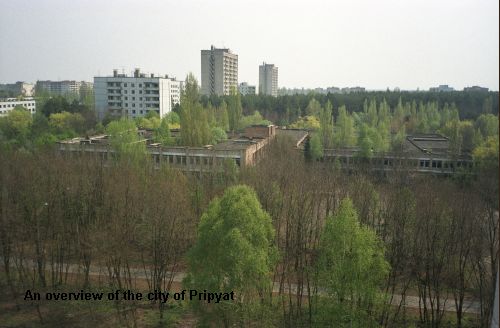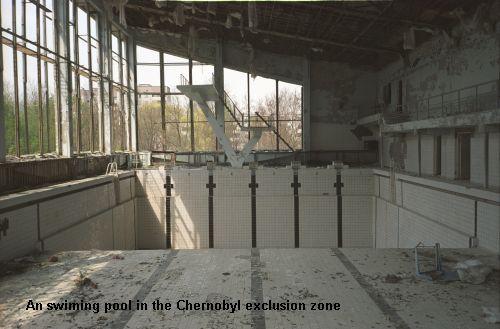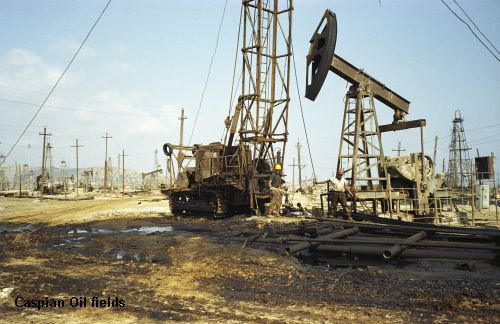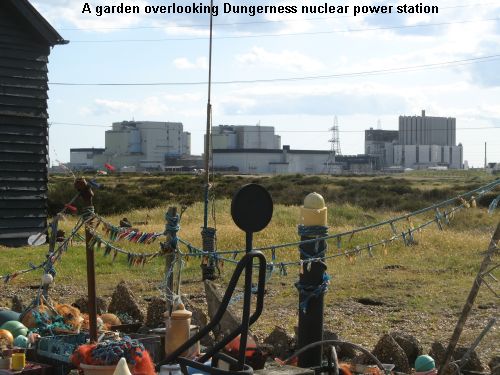
A Man For Danger [2012-10-26]One of the more fascinating & rewarding field recording/ sound art releases to appear this year is Peter Cusack ’s ‘Sounds From Dangerous places’, which brings together two discs worth of recordings from around the world & a 90 page book. Peter Cusack is a British artist, sound artist and musician who now lives in Germany- he has worked as a improvising guitarist, sound archivist, and sound artists since the late 1970’s. Peter kindly agreed to do an email interview with M[m] discussing ‘Sounds From Dangerous places’ project. m[m]:Tell us a little bit how the idea for the ‘Sounds From Dangerous places’ project first came about?
Peter 'Sounds from Dangerous Places' was born on my first visit to the Caspian Sea oil fields at Bibi Heybat in Azerbaijan in 2004, although it took a while before the idea became clear. There I was immediately struck by the visual and sonic beauty of the place, which is aesthetically stunning. But as I walked around I, of course, noticed that the land and sea was saturated with oil spills and that the smell was intense. In short it was the most polluted spot I'd ever been in. Further on I saw a herd of cows grazing on the few oil covered blades of grass still growing. I was told later that marginalised people, forced off land elsewhere, had no choice but to live in these devastated areas. Over months I slowly recognised that my aesthetic response was seriously at odds with the environmental, social and political realities of such places. The sounds I had recorded were, although beautiful in isolation, representative of severe environmental damage, economic exploitation and social deprivation.
Peter The project really stems from there. I began to look for other places where environmental damage could be explored through the sounds and sound-scapes there. Chernobyl was an obvious choice. These experiences convinced me that investigating areas (damaged or not) through sound was extremely revealing and gave a sonic perspective that was different from a visual or language perspective. It is not better, just different. My belief now is that studies which combine all these media can be very powerful and the question is how best to do this given ones resources and capabilities.
m[m]:Tell us a bit about the editing processes, and how long it took to get this huge project into an order you wanted it in?
Peter The project has so far taken 8 years. There is much material - recordings, photos, research data, interviews. The aims has never been for just one result, so there have been exhibitions, radio programs, websites, many talks and lectures, as well as the CD/book. The CD/book is the single largest result so far, but that benefitted from all work that had gone before. However it still took several years listening and thought to make the final edit. The writing took a similar length of time. Over this period things kept changing of course. Fukushima happened, which had to be briefly mentioned. Also I finally came up with the term 'sonic journalism' (the sound equivalent of the photojournalism) to describe the focus on sound as a way of gaining insights into world issues and events different, but complementary to, visual or language based journalism. There is a longer article about this at http://sounds-from-dangerous-places.org/
Peter A fair amount of material has been left out completely, eg the recordings from dam building in east Turkey (very controversial) that have been held over for the next phase of the project that concentrates on issues of water use and abuse..

m[m]:You mention that you wanted the project to be multi faceted- could you tell us in a bit more about what has so far come from the project( other than the cd/book), and what you hope to do with it in the future?
Peter There have been exhibitions (e.g. Festival @rt Outsiders, Paris 2009) where 30 of the Chernobyl photos were displayed illuminated by individual spot lights that turned on and off controlled by the sound track thereby picking out which images or groups of images was appropriate to the sound playing. Also I've given many talks both in and outside education institutions, including conferences talks about the project, e.g. MutaMorphosis symposium, Prague, 2007, Tschernobyl. Gebet – Reisen in verstrahltes Gelände with Swetlana Alexijewitsch (author of Chernobyl Voices), Berlin 2010. Bernie Krause has quoted from the project in his latest book The Great Animal Orchestra. I've also done a fair number of radio, eg for the BBC, Deutschland Radiokultur, WDR and magazine/press interviews linked to the project, e.g. The Wire, Blow Up (Italy). Peter There are no particular plans for the future but I expect to do more talks for sure and maybe other stuff if there are invitations.
m[m]:How easy was it to get access to record in places, and what was the most problematic place to get access to?
Peter This varies greatly from place to place. You can get into the Chernobyl exclusion zone by paying for a permit. Except in one or two known hot spots the radioactivity there has long ago reduced to normal levels for short term visits. Official visitors are charged for transport from Kiev, accommodation and food, and a guide and driver who will take you around during working hours. In 2006 this cost $1100 for 2 people for 4 days. I do not know what the current situation is. You can also go on day coach tours from Kiev. A 30km zone is a huge area to patrol. Local people have always been able to cross in and out at will. Any stranger would probably be reported fairly quickly though.
The Caspian oil fields are completely open and one can just walk in, although there are incidents of journalists and photographers being arrested and deported. Local
people are nervous about taking you there. This was my experience in 2004. The regime has since become more repressive, so things may have changed.
Peter In the UK security around nuclear (and other) power stations, oil installations, etc is extremely tight - razor wire fences; CCTV; dog patrols; Sellafield has armed police. At Sellafield photography/recording is perfectly legal from the outside. However I was stopped and search twice on one afternoon's visit. The main fear seems to be green activism. Guided tours around power stations were stopped after 9/11 but some have visitors centres.
Peter There is an amazing contrast with other European countries. I'm currently recording at massive opencast brown coal mines in Germany. There is almost no security at all. One can walk right up to the edge of these vast pits in the ground, without the smallest fence to stop you. The mining process creates unstable ground and there are regular landslips. In other words there is some genuine danger, but beyond occasional notices to that effect the authorities appear to respect people's common sense about where to go. I should say that on all visits I never seen anyone else (other than workers) there.

m[m]:What equipment did you use for recording in the various locations?
Peter Nagra P2 recorder; DPA 4060 miniture mics; Sennheiser MKH418 mic; home made contact mics and hydrophones. m[m]:Was there much editing done with any of the field recordings on the two discs?
Peter Yes. All the tracks are edited from longer recordings, so choosing start and end points is very important and often takes me quite a number of tries before settling on one particularly. Occasionally if the gaps between significant events is too long I also take something out from the middle, eg in the oil field sound walk tracks. Editing is not just a question of the individual tracks but how they work together. So I spend a lot of time on cuts, fades and gaps between tracks and also on the track order. Usually there is some fairly minimal EQ as well, eg bass roll off 
m[m]:How much material altogether have you recorded for the project?
Peter Hard to say - many hours, although I would say that what's on the CDs is a good representation. There are a lot more songs from the Chernobyl villagers though. m[m]:Where did you stay when you recording in Chernobyl?
Peter The Chernobyl administration runs a guest house in Chernobyl town (13km from the reactor site) for official visitors. They supply all meals with food brought in from outside. You have no choice but to stay there.
m[m]:In your introduction to the Chernobyl part of the book, you talk about the growth of tourism with zone- did you find you were aware of this when you were in the zone?
Peter We often saw adverts for coach trips while in Kiev. But in the zone we didn't see any actually there. At one point a young twenty something couple were being driven around the abandoned town of Pripyat. We were told that they had just flown in from Moscow for a couple of hours sightseeing. Our driver also spoke of a Finnish group who had just made a pop video in the disused swimming pool there dressed in silver foil costumes.
m[m]:the thing I found most surprising about both discs was the sounds of humanity that were found in these dangerous places, in particular Chernobyl. Was this something that surprised you too?
Peter Yes I was surprised at how many people are still in the 'so called' exclusion zone. Around 20k workers are still employed at the reactor site, for continuing clean-up operations and all the usual activities needed to keep a fair sized population running. Some of these worker live there in abandoned house that they've renovated, but most live in towns outside the zone and commute in by train. Also several thousand local villagers returned to live there after they were initially evacuated. We also met villagers who said that they were never evacuated and had been there the whole time.
Peter There is a big problem with the reporting of major disasters around the world. Once the interest in the catastrophe has died down very little news attention is given to the survivors. In all of these places though life goes on. Local people and authorities have to stay and deal with the consequences long term. Most of what happens is quite unknown to the rest of the world. Chernobyl is no exception.
m[m]:are you ever fearful of the health effects from recording in dangerous places?
Peter Not so far. Most of the places I've visited are not dangerous from the health perspective (at least on short visits) and at Chernobyl the radiation had long reduced to normal before I went.
My usual fear (very rarely realised) is other humans like corrupt officials after a bribe or over zealous security. 
m[m]:Have you considered doing a second volume of ‘Sounds From Dangerous places’, as of course there’s still many places that could be recorded?. Such as the Russian town of Karabash, where a local copper smelting plant has caused great pollution & health problems to it’s in-habitants.
Peter Yes, of course, one could spend several lifetimes on such a project. At the moment I'm working on the massive opencast brown coal mines in Germany and the Czech Republic. These swallow whole villages and indeed large sections of motorway. Entire graveyards are exhumed and moved else where. Afterwards absolutely nothing remains as opposed to disasters like Chernobly or in military zones where ghost towns still exist. However today in the developed world the companies involved undertake to regenerate the land. And it's the regeneration process that interests me most. Is it appropriate, does it work, can nature (and people) return and in what form? These are the questions being asked.
There is so much environmental damage around the world that focussing only on destruction can be counterproductive. It is certainly depressing. What's needed now is proper consideration of solutions and where solutions have been proposed they need to be seriously monitored. Companies are extremely adept at swamping what they do in positive PR. It is this that needs vigilant attention.
m[m]:What do you hope to do with the brown coal mine recordings?
Peter This is not yet clear. As opposed to other places these mines are eerily quiet. There is constant distant machinery, but not so interesting as a recording. The point here is how to represent total desolation in sound. We are just starting so I'm not sure yet.Visually these places are spectacular and it makes sense to hear the sounds, or their absence, in contrast with the images.
There are also a lot of interesting stories and information around the mines and the companies that exploit them. We have shown the material so far as a presentation and discussion in Prague, together with a geologist who gave his perspective on how dominant humans have become as a geological force. Talks are often an effective way of using such recordings and images.
Thanks to Peter for his time & effort with the interview, and for the use of pictures through-out the interview. ‘Sounds From Dangerous places’ is now available through ReR Megacorp/Berliner Künstlerprogramm Des DAAD. The projects site can be found here
Roger Batty
| 
